Not everyone is ready to endure harsh Canadian weather. So here are the 12 warmest places to live in Canada. Winters are mild or sometimes hot, and summers are never too hot in these places.
Most of the sites in this list share a common theme: they are all in British Columbia, Canada‘s westernmost province. Although British Columbia has some of the world’s top ski slopes, many coastal villages benefit from milder temperatures and moderate weather. However, as you’ll see, there are a few warmest cities in some of Canada’s other provinces that are warmer than most, and a few of them may surprise you!
1. Victoria is one of the warmest place in Canada
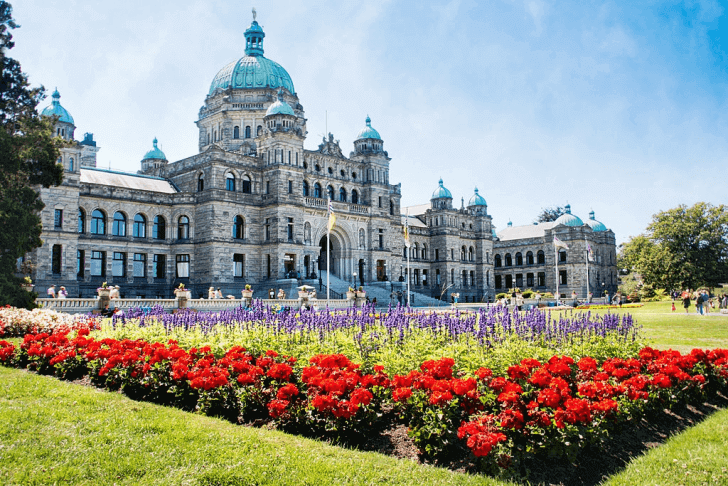
Victoria is the warmest Canadian city. It has the highest average temperatures in Canada, with a high of 7.6 degrees Celsius (45.7 degrees Fahrenheit) and a low of 1.5 degrees Celsius (34.7 degrees Fahrenheit) in January.
Mild winters make Victoria and other Vancouver Island cities popular retirement destinations. Even the popular Butchart Gardens stay open in winter (though you’ll have to visit their indoor gardens to see flowers).
Victoria’s winter pastimes include ice-skating, Christmas light tours, and tea. You can enjoy these activities without losing finger and toe feeling.
2. Vancouver
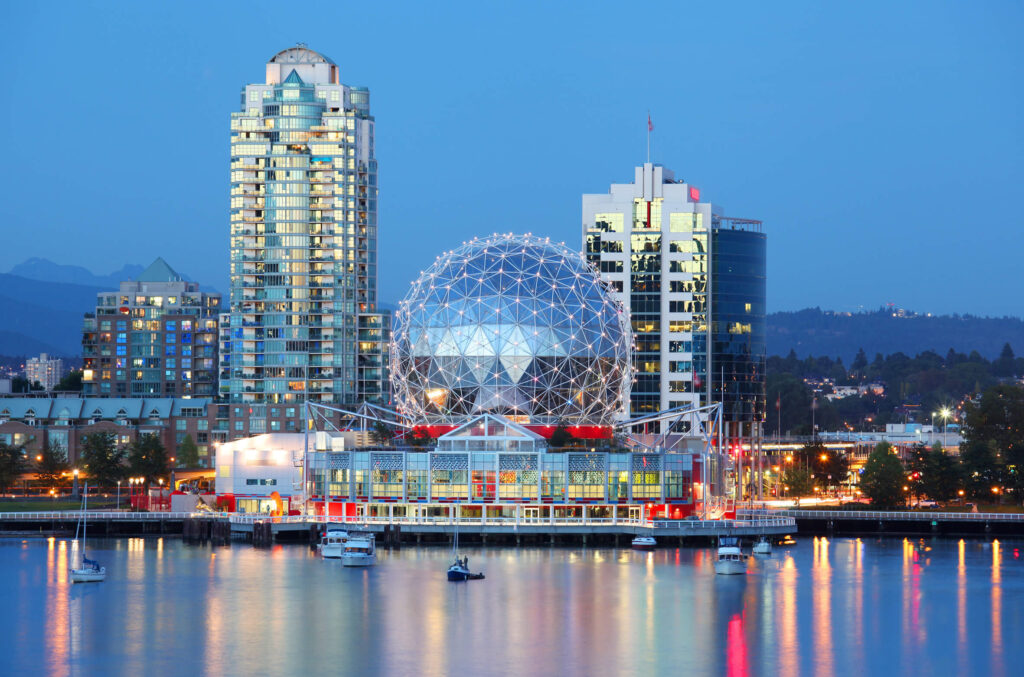
While the rest of the country is zipping up winter parkas and scraping frost off windshields, Vancouverites are strolling along the Sea Wall, eating lunch on a sunny terrace, or playing golf (seriously – there are golf courses that are open year-round).
Vancouver averages 6.9 degrees Celsius (44 degrees Fahrenheit) in January, with lows of 1.4 degrees Celsius (34.5 degrees Fahrenheit) – the warmest Canadian city. Not Florida or Hawaii, but warm enough to enjoy the outdoors. Vancouver often has a few warm, bright days in the middle of winter, like a sneak look of spring.
If you visit Vancouver in the winter, you’ll undoubtedly experience the city’s infamous rain. Don’t let a little rain stop you from enjoying the city. Bring an umbrella or rain jacket.
3. St. Catharines, the warmest place in Canada
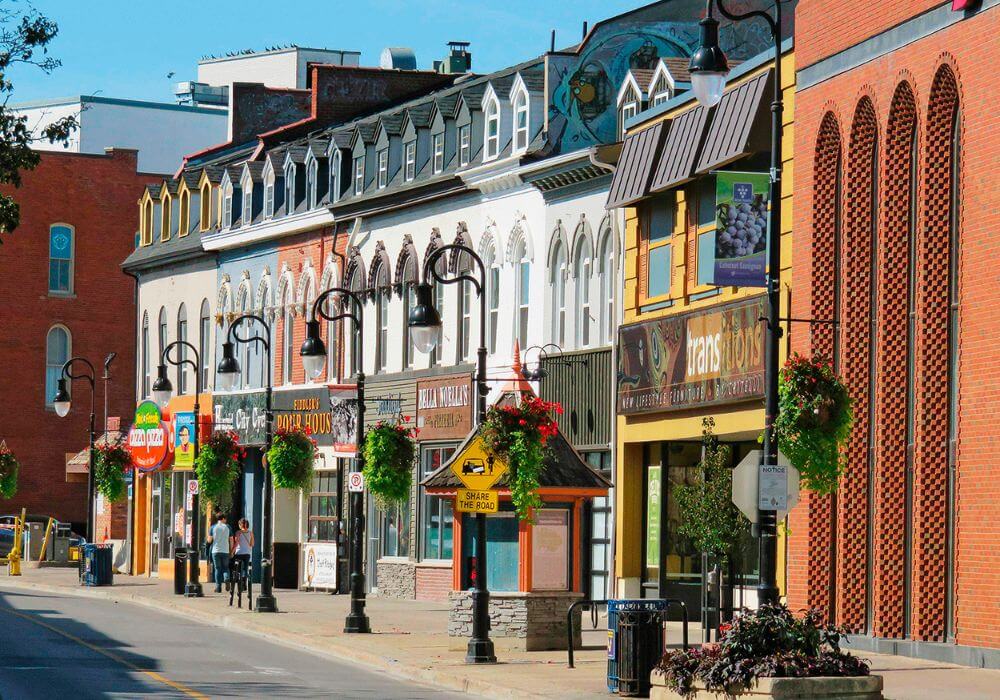
Why is Ontario city on a list of Canada’s warmest winter places?
No typo. St. Catharines, Ontario, benefits from its closeness to Lake Ontario and Lake Erie and the Niagara Escarpment. Microclimate keeps the city warm even in the cold.
St. Catharines is warmer than other Ontario cities (Sarnia is warmer), although winters are still cold. November’s average daily high is 8.4 degrees Celsius (47.1 degrees Fahrenheit), and March’s is 7.4 degrees Celsius (45.3 degrees Fahrenheit).
4. Kelowna

Kelowna, British Columbia, offers a cold-weather vacation without the rain.
This is a popular summer getaway because the temperature is hot and the lake is great for water sports. Winter hiking, a day at the spa, or a supper at a world-renowned restaurant are great reasons to visit Kelowna and the Okanagan region.
You can visit when you want snow and winter enjoyment. Kelowna is close to BC’s top ski destinations, so bring your skis.
5. Warmest place in Canada is Halifax

Halifax is the warmest Canadian East Coast city in the winter. Halifax’s warmer winters are due to its coastal location.
Mild is relative; expect a lot of snow if you visit Halifax in the winter. Citadel Hill offers snowshoeing, cross-country skiing, and tobogganing.
You can learn about Nova Scotia’s rich history at the Canadian Museum of Immigration or the Maritime Museum of the Atlantic. Art Gallery of Nova Scotia offers culture. Want to study astronomy or science? Discover Centre.
Halifax’s winter attractions are less crowded than in the summer. You may avoid crowds and find great offers.
- Read more: 5 Must-Do Activities in Halifax Canada, According To A Canadian
6. Courtenay
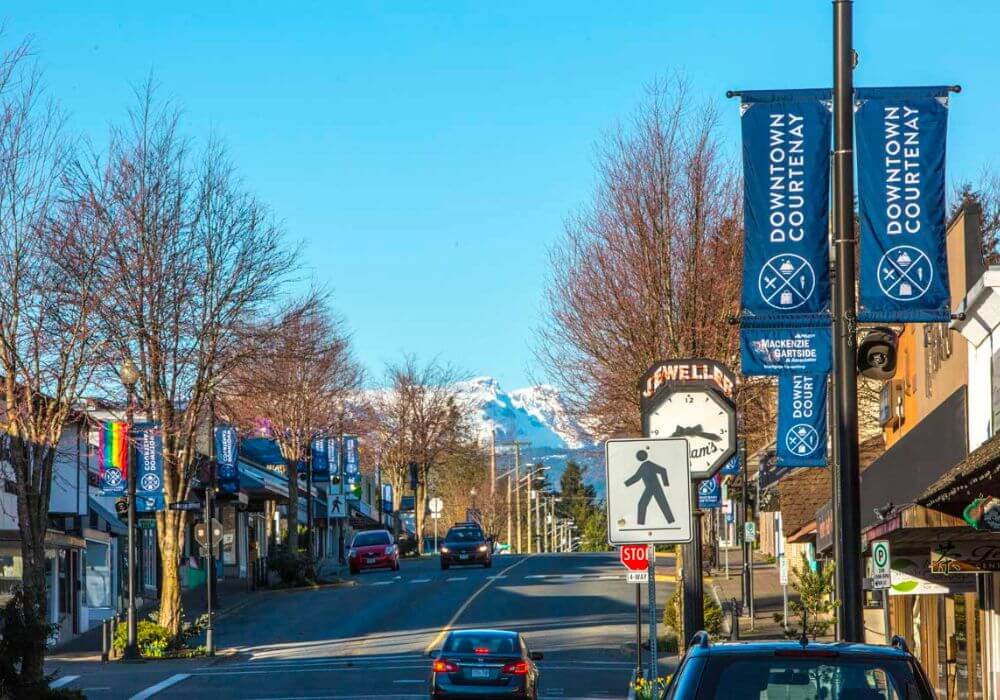
You’ve heard of Victoria, a major Canadian tourist destination, but what about Courtenay? This 26,000-person city on Vancouver Island’s east coast is considered a hidden gem.
Courtenay has mild winters, with average highs of 6.4 degrees Celsius (43.5 degrees Fahrenheit) and lows of 1.4 degrees Celsius (34.5 degrees Fahrenheit).
Mount Washington, a half-hour drive from Courtenay, offers snowboarding, downhill skiing, and cross-country skiing.
You may escape the snow and return to Courtenay to enjoy the indoor winter farmers market or year-round golf courses.
7. Sunshine Coast – warmest place in Canada
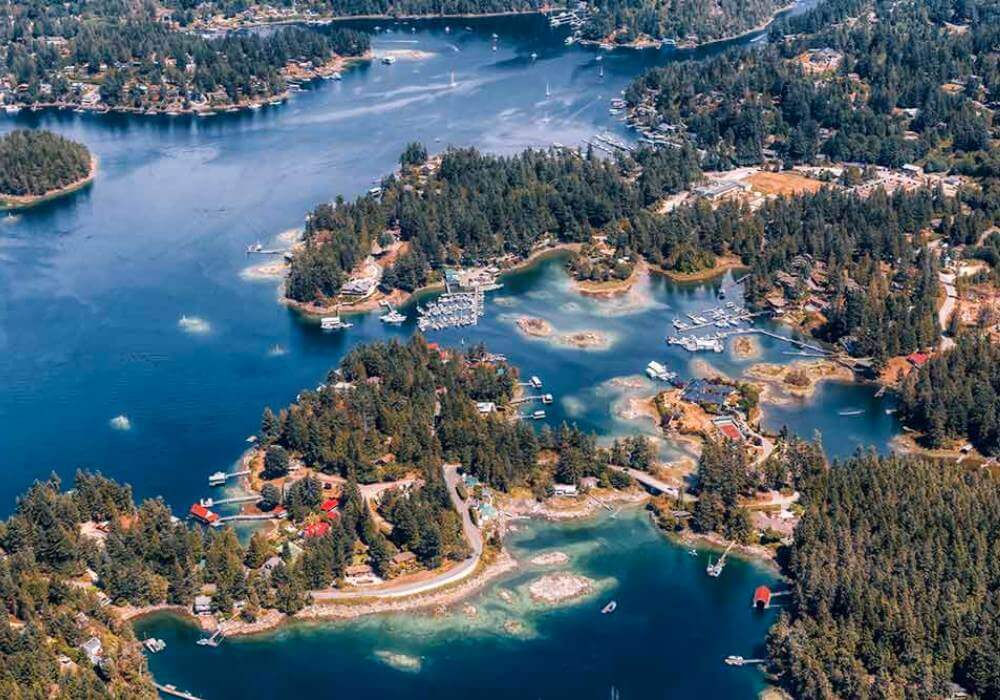
It’s simple to see why southern British Columbia’s Sunshine Coast is so popular. Sunshine Coast, accessible only by ferry, is home to various beautiful beach settlements with cute boutiques, relaxed cafés, and restaurants with great views.
The Sunshine Coast is like a Hallmark Christmas movie, sans the snow. Warm winters (for Canada) mean the area doesn’t get much snow but does get a lot of rain.
If you don’t mind the rain, you’ll love exploring trails, waterfalls, and beaches. You can relax by the fireplace or hot tub at night. Sunshine Coast has winter’s comfort without the cold.
8. White Rock

Take Vancouver, but add some heat and less rain. White Rock!
White Rock is a tiny city south of Vancouver and just north of the US border. It’s farther from the Coast Mountains, therefore it gets 20% more sunshine than Vancouver.
White Rock offers a respite from Vancouver’s dreary sky and rainy weather. If it’s sunny, drive an hour south to enjoy the day. First, visit White Rock Pier and promenade. After lunch, go back to Vancouver.
White Rock is an excellent winter vitamin D spot.
9. Warmest place in Canada: Kamloops

Sunny winter days make the cold more bearable. Kamloops is the province’s second sunniest city, even in winter. This is a good destination to avoid snowstorms and rain.
Kamloops is a mountain valley. Down in the valley, it’s pleasant (by Canadian standards; you’ll still see sub-zero temps in the winter). In Canada’s mountains, it’s colder and snowier, excellent for snow sports.
You don’t have to travel far to ski, snowboard, skate, or snowshoe, but there are also plenty of indoor activities. Try rock climbing, trampolining, or an escape room to challenge your body and mind. Busy, you won’t notice the weather.
10. Sooke
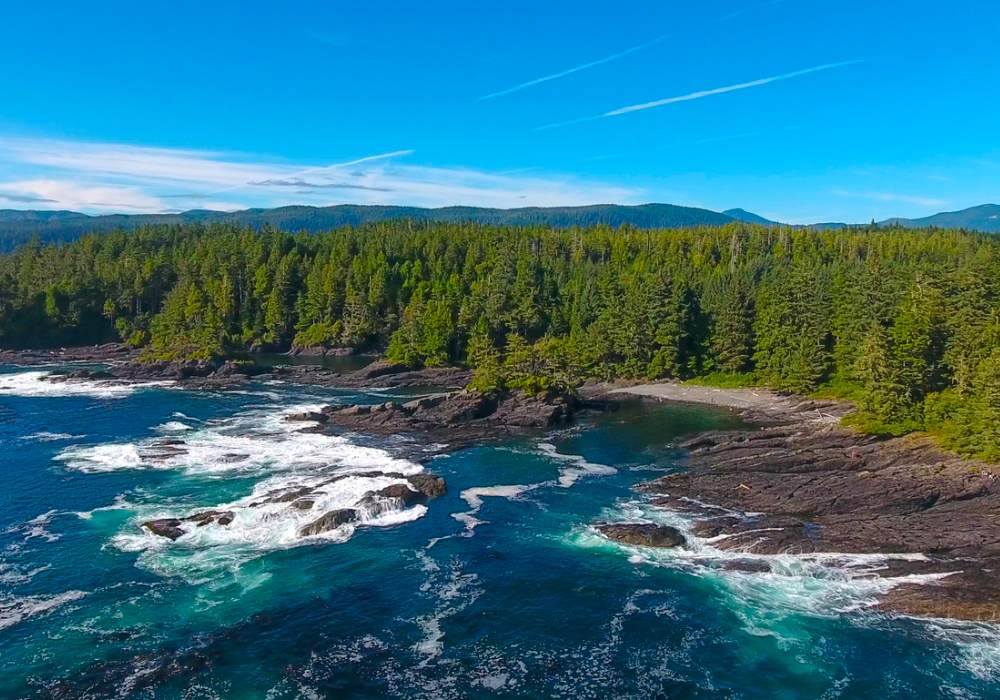
Sooke is a little town on the rugged west coast of Vancouver Island with a fair assortment of restaurants and amenities.
This small village, tucked behind a promontory that shelters it from the Juan de Fuca Strait, is the perfect winter and city hideaway. It’s only half a degree cooler than Victoria in January, averaging 7 C (44.6 F).
Here, people are diverse. Everyone is friendly, regardless of background.
Under the town’s tree cover is Vancouver Island’s best hiking. Nearby beaches offer strolling, picnicking, and ocean views. The Galloping Goose Trail stretches from Sooke to Victoria, with mountain riding routes nearby.
11. Toronto – warmest place in Canada
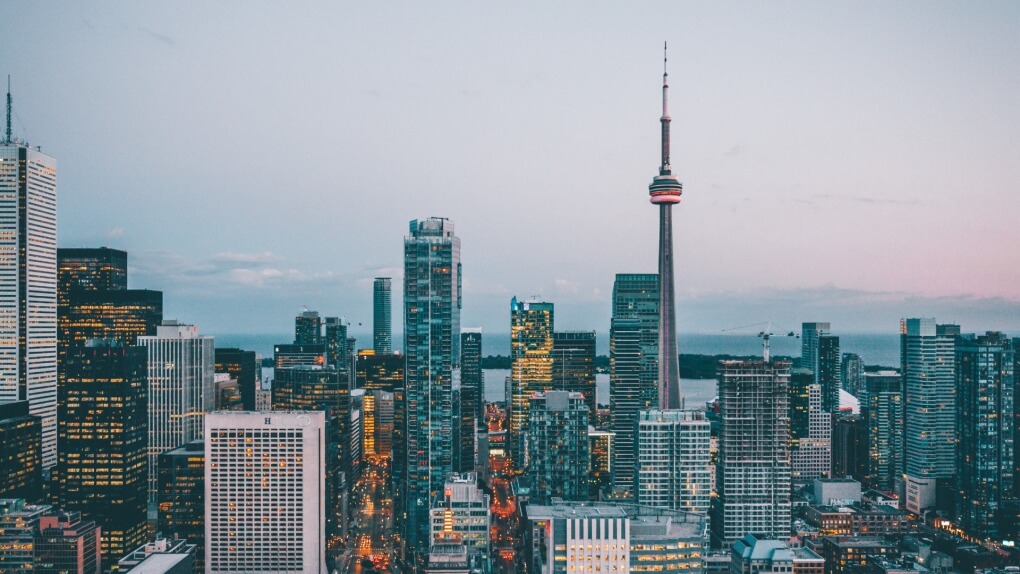
If you’ve visited Toronto in winter, you may question its inclusion. Toronto gets cold. Winter snows. You’ll need winter boots, a heavy coat, and a toque (a Canadian winter hat).
Toronto enjoys Canada’s fourth-longest frost-free season. Toronto has frost-free 203 days a year, just eight fewer than Victoria, Canada’s mildest city. By Canadian standards, this is a warm climate.
With an average daily high of -1.5 degrees Celsius in January, you probably won’t need a bathing suit unless your hotel has a pool. There are plenty of indoor attractions during winter, including museums and sporting games (namely, the Toronto Raptors and the Toronto Maple Leafs).
Toronto is an action-packed destination without much outdoor time. When you go outside, remember it’s not as cold as Calgary or Montreal.
- See more: Toronto Winter: 11 Wonderful Activities You Must Do During This Season
12. St. John’s

St. John’s is Canada’s windiest, foggiest, and cloudiest city.
You’re likely to experience all of them if you visit in the winter (often on the same day), but the Gulf Stream moderates temperatures. Only slightly colder than Kelowna, BC (another mild city featured earlier on this list).
St. John’s winters aren’t mild. Warmer temps melt the city’s snow quickly. St. John’s winters often include rain, sleet, and freezing rain.
An optimist might comment that the severe weather is a perfect backdrop for viewing the craggy coast. Signal Hill and Cape Spear offer distinctive coastal views.
13. Some facts about Canada’s winter

- Regina is both the coldest and warmest city in Canada.
- Wind chill record: -91 degrees Celsius
- The season with the most snowfall: 2,446.5 cm
- Maximum single-day snowfall: 145cm
- Plaster Rock is the world’s largest pond hockey competition.
- Rideau Canal has the world’s largest naturally frozen skating rink.
- Churchill, Manitoba is the world’s polar bear capital.
- The greatest temperature change in Canada: 41 degrees.
- The Grand Banks of Newfoundland are the world’s foggiest winter location.
- Ottawa is the world’s snowiest capital city.
- Nunavut is the coldest territory in the winter.
